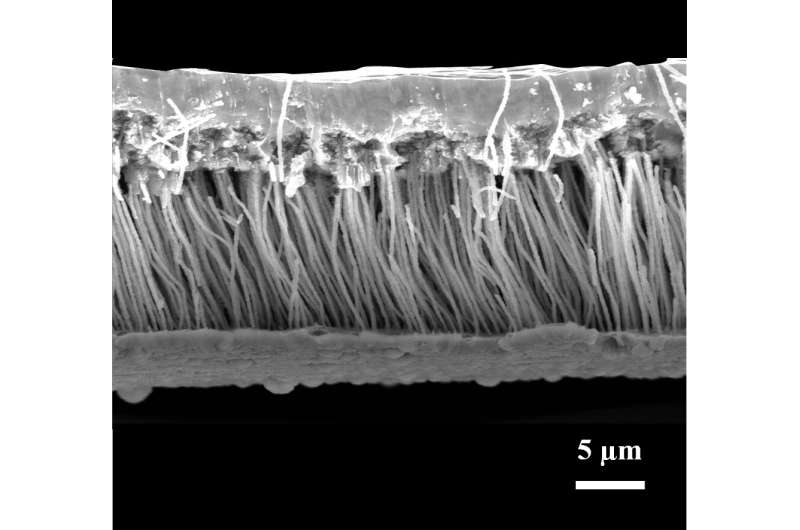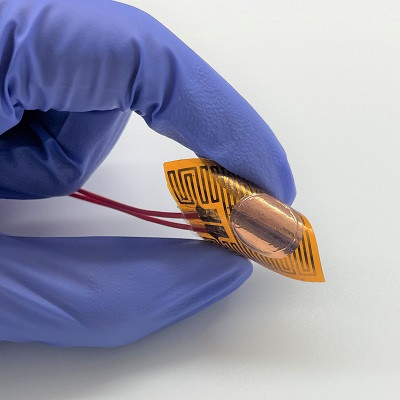As devices get smaller and more powerful, the risk of them overheating and burning out increases substantially. Despite advancements in cooling solutions, the interface between an electronic chip and its cooling system has remained a barrier for thermal transport due to the materials' intrinsic roughness.
Sheng Shen, Professor in the Department of Mechanical Engineering at Carnegie Mellon University has fabricated a flexible, powerful, and highly reliable material to efficiently fill the gap.
"At first glance, our solution looks like any ordinary copper film, but under a microscope the novelty of our material becomes clear," explained Lin Jing, PhD student.
The material, composed of two thin copper films with a graphene-coated copper nanowire array sandwiched between, is extremely user-friendly.
"Other nanowires need to be in-situ grown where the heat is designed to be dissipated so that their application threshold and cost is high," said Rui Cheng, postdoctoral researcher in Shen's lab. "Our film isn't dependent on any substrate, it is a free standing film that can be cut to any size or shape to fill the gap between various electrical components.
"The "sandwich" builds out of Shen's "supersolder," a thermal interface material (TIM) that can be used similarly as conventional solders, but with twice the thermal conductance of current state-of-the-art TIMs.

By coating the "supersolder" in graphene, Shen's team enhanced its thermal transport capabilities and prevented the risk of oxidation, ensuring a longer service life. The "sandwich," compared to the thermal pastes/adhesives currently on the market, can reduce thermal resistance by more than 90% when considering the same thickness.
Thanks to its ultra high mechanical flexibility, the "sandwich" can enable a wide range of applications in flexible electronics and microelectronics, including flexible LEDs and lasers for lighting and display, wearable sensors for communication, implantable electronics for monitoring health and imaging, and soft robotics.
Moving forward, Shen's team will explore ways to scale the material at an industrial level, lower its cost, while continuing to seek ways to improve it.
"We are very excited about this material's potential," Shen shared. "We believe that a wide variety of electronic systems can benefit from it by allowing them to operate at a lower temperature with higher performance."
This research was first published in ACS Nano and is a collaborative effort with Tzahi Cohen-Karni, a professor of biomedical engineering Opens in new window and materials science and engineering Opens in new window, and Xu Zhang a professor of electrical and computer engineering Opens in new window, both of Carnegie Mellon University.
Read the original article on Carnegie Mellon University.
